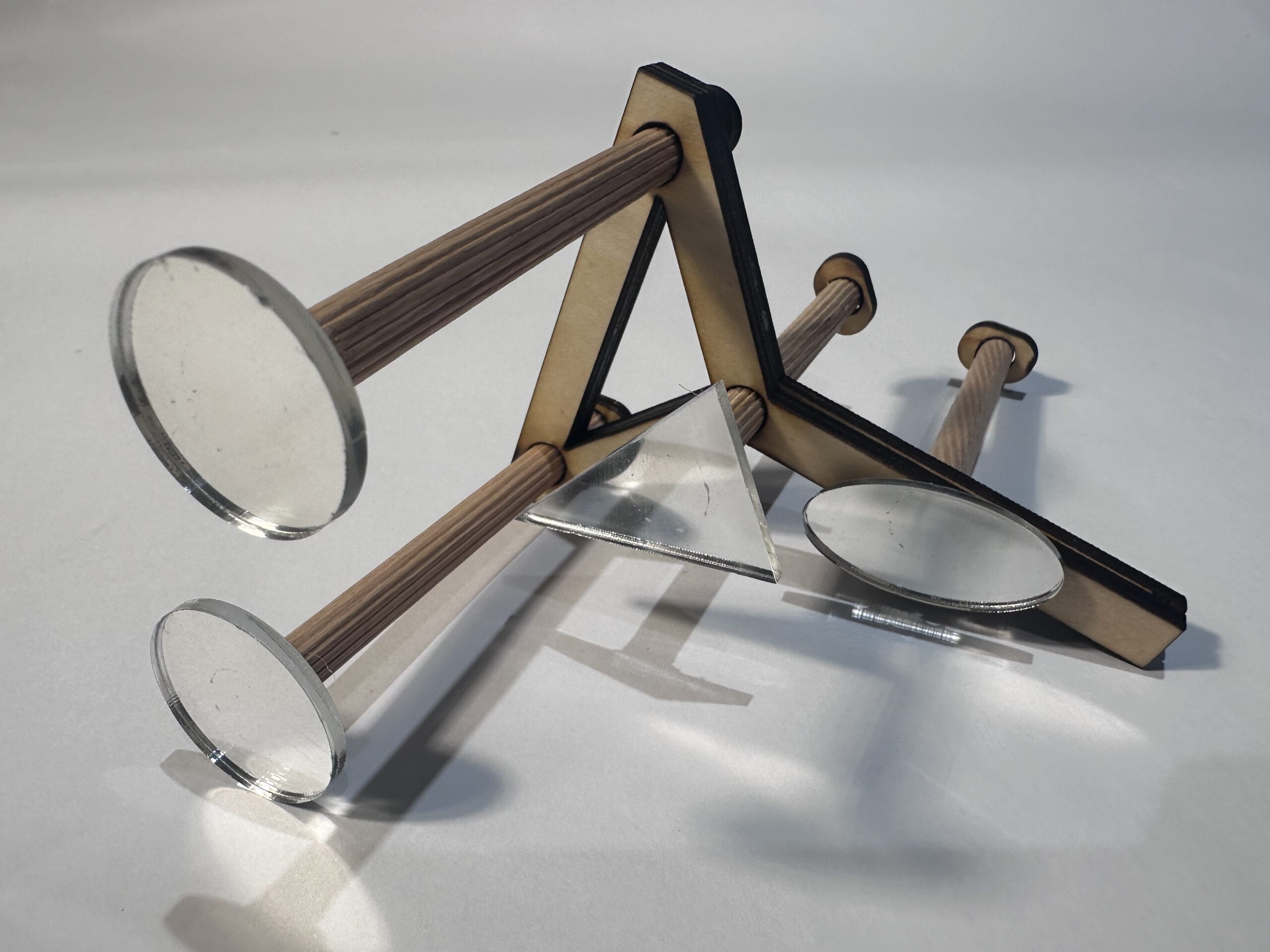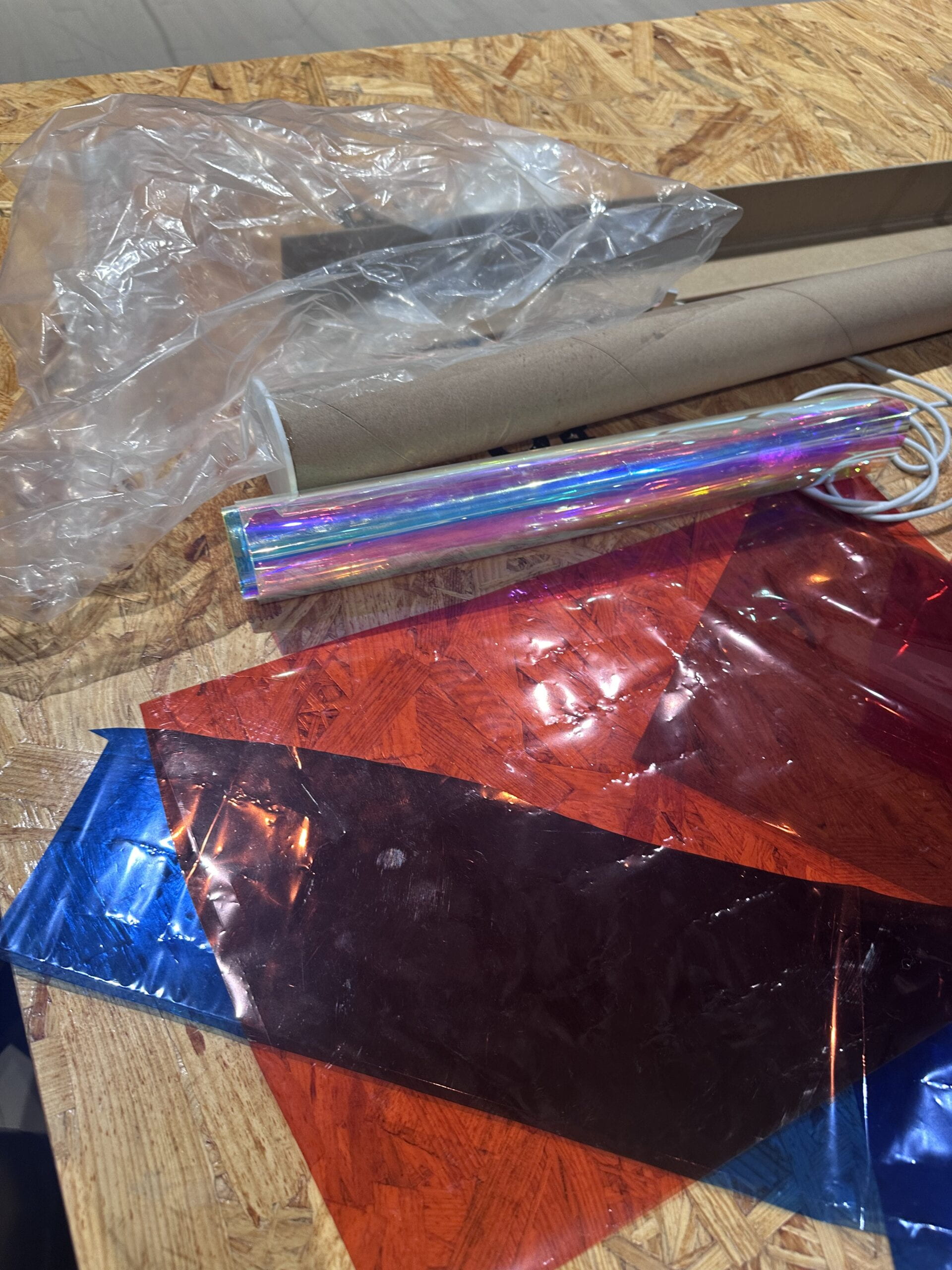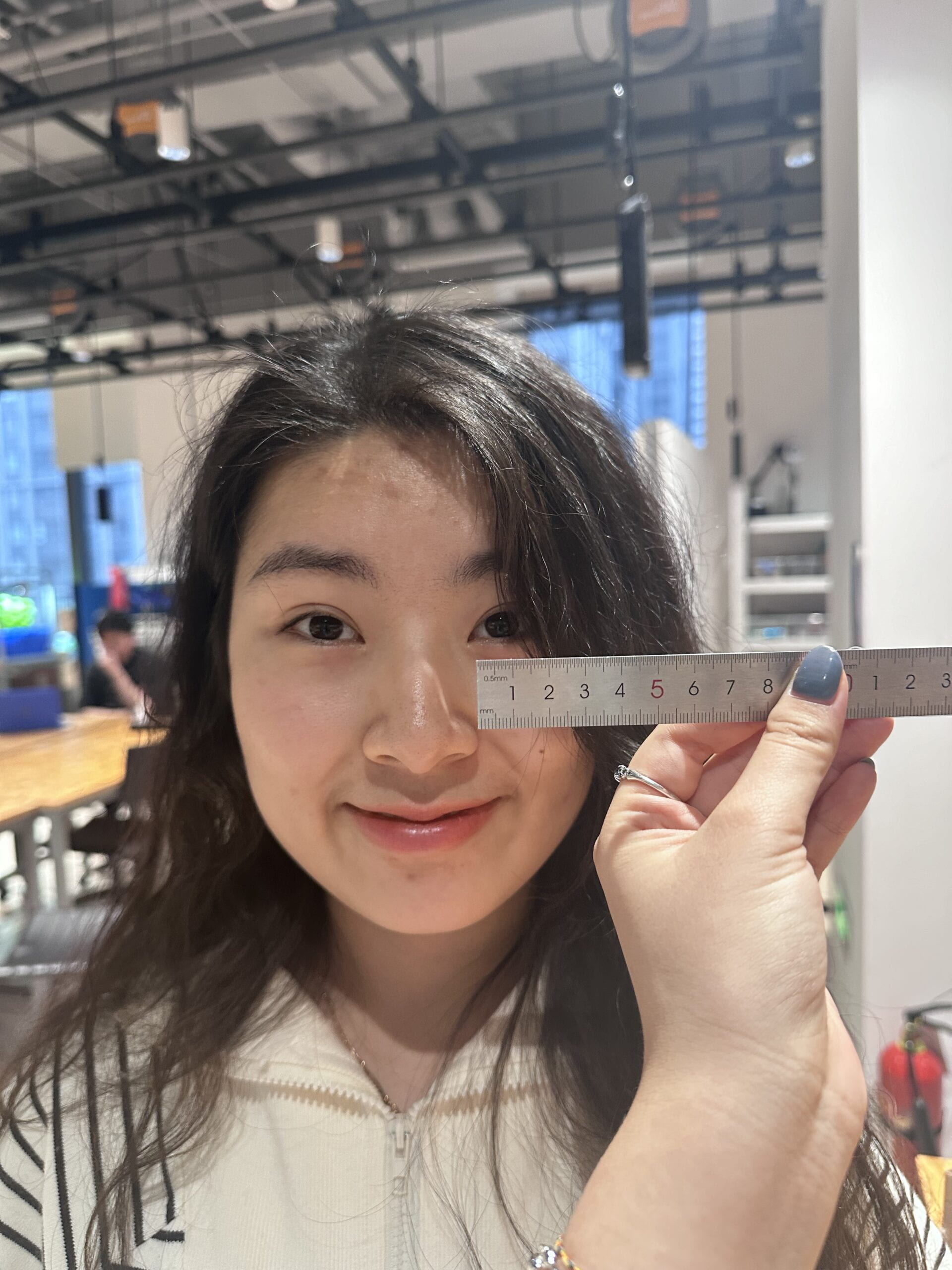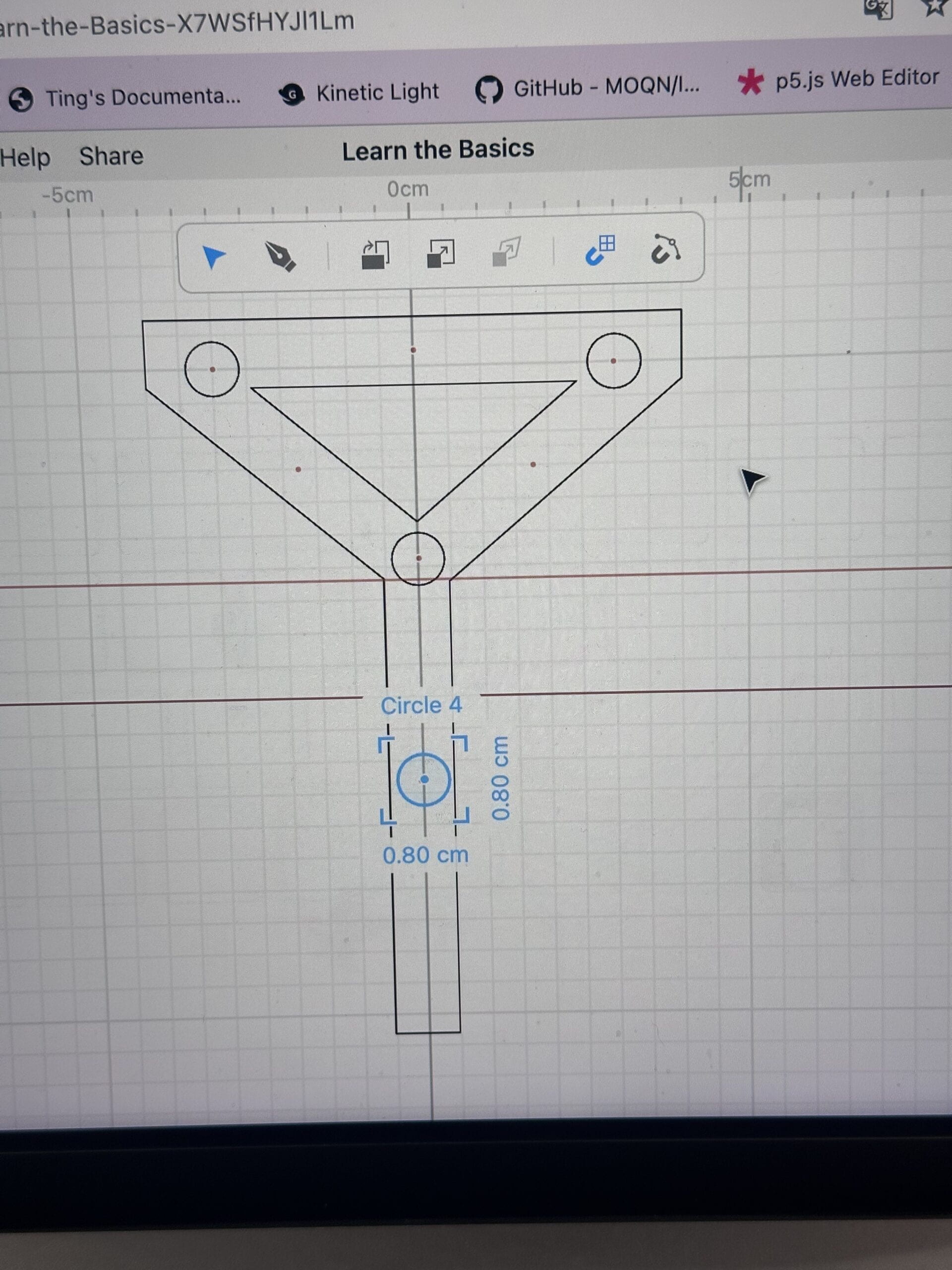A. Title: S e p a r a t e F a c e – Ting – Prof. Eric Parren




B. Project Description / Introduction
This project consists of five mirrors that match one’s eyes, nose, and mouth. It is about seeing our facial organs first separately and then together. Due to the different distances from mirrors to our face, it constitutes a new combination of face organs in different sizes and positions in our eyes. The intention behind this mirror device is vision interference with your recognition of the distribution of your eyes, nose, and mouth. People may find their faces funny in the mirror. The game of piecing together one’s facial organs which were cut off from a picture of one’s face inspired me to do so.
C. Perspective and Context
In the first week, sense interference is discussed. We experience many devices about it, like upside-down glasses or glasses of filters. They truly interfered with my vision and then my recognition about the environment around me. It led me to look for more possibilities about how sight influence my recognition.
In Irwin’s reading, he divided the process of compounded abstraction to six steps: 1. Perception/ Sense, 2. Conception/ Mind, 3. Form/ Physical Compound, 4. Formful/ Objective Compound, 5. Formal/ Boundaries and Axioms, 6. Formalism. We have our sense and perception since born. And then based on the perception, our mind form the recognition and conception. Next, we represent our mental thoughts in a physical form. From my perspective, it’s like we set our concept of beauty in a certain distribution and size of our facial organs and also, the behavior of my conceptualizing and interpreting my project. Then, it went to the form and the use and the norm and the mind. “The fact of our lives and logics having up til now enjoyed a relative independence and self-sufficiency will now become compounded fact-the fact of facts-to form a truth, and while appearing to become more concrete, will in fact become increasingly ethereal and unsupported.”(Irwin, 28) When thoughts was separated from reality, then everything which looks real will be actually unreliable, which led to formalism. However, is formalism empty? Is art fully formalism? I agree with Irwin’s idea that “there is one infinite
subject: The subject of art is aesthetic perception.”(Irwin, 31) I believe, art is the product of aesthetics and minds. In my project, the aesthetic part was not only the simplicity in the form but also the scene we see in the project. As what I have mentioned above, human set “beauty”, this concept, in the face. The project I made was purely physical, but when we use it, the scene we see in the mirrors was partly different from what we expected to see in a normal mirror and then, the expectation and recognition was interfered with. People focus on the separate facial organs instead of the whole face. It can change people’s first intention when seeing their faces. I think my project is formal but it does have effects on one’s minds, which means it works as art.
D. Development & Technical Implementation




At first, I was thinking of making a distorting mirror by adding a laser paper or other color paper with curve. When I was trying to see my face in the distorting mirror, I found out the reason why we called this a “Ha Ha Mirror”. The weird distribution of our facial organs changed our recognition of our face and made us feel funny. Then, I saw five pieces of mirrors on the table and thought of the game of piecing together one’s face organs on a paper. I tried to place it in the distribution of our facial organs, which inspires me of the idea of this project.

(This is the very rough sketch of the frame of my project.)



(Special thanks to Zora and Ricci for being my models)
I measured the size of eyes, nose and mouth from my friends to make an appropriate shape of the mirrors. I shrank the sizes of the mirror compared with the real size of the facial organs, when taking the distance from mirror to face in consideration.





Then, I used laser cutting to make the small mirrors. Freddie helped me use the new laser-cut machine with a camera to cut these mirrors very fast.






After that, I used cuttle.xyz to design the frame. There was a little problem with the old laser-cut machine, which met my frame on fire 🔥. So I made a lot of frames. To made people hold it more comfortably, I glued two of them together. And this thickness also helped support the sticks in a certain direction. It was also amazing that the sticks just fit in the holes. However, there were some flaws of this project. When I used hot glue to stick the mirror on the sticks, hot glue burned some marks on the mirror, which I cannot fix. Additionally, when the project wasn’t held in an appropriate direction, some sticks might just fall on the ground. So I made some small handles to fix it. Participants can also use the handles to adjust the distance from mirrors to face.
[User cideo Documentation by Nadine Chen]
[User Video Documentation by Ricci Liu]
The interaction is very simple. Users only need to hold it in front of their face. Then, adjust the distance from mirrors to face with the handle on the stick until they see their facial organs separately shown in all five mirrors. After that, users can still adjust the mirrors to see the changes of the sizes and distribution of their facial organs to feel the vision interference.
E. Presentation




The presentation went very well. I think it depends on how easily people can understand how to experience the project. I felt very nervous when seeing them play with it. But I became relieved when I found out everyone can understand and get fun from my project. The participants didn’t show confusion after my interpretation. This device is convenient for everyone to try. The most unexpected reaction was the praise from Santiago that he thought my project was like Picasso Style. I felt extremely flattered.
However, I got some suggestions from the participants. I think they are very beneficial and helpful for my project. My project can be better and more fun if there are some color filter paper on the mirrors or use lens instead of mirrors. I should make a handle also in the front so that it can be more convenient for people to adjust the sticks with mirrors.
F. Conclusion
In this project, I struggled a lot in the preparation part. It spent me a lot of time to think of an idea. After trying a lot of material in different ways. I finally came up with the idea of this “separate face”. In this process, I learned that inspirations are not easy to find. Trying helps inspiring. In the presentation, I discovered that participants’ experience is really important. When I see people have an enjoyable experience with my project and understand it, I felt a sense of achievements. Also, I think the user experience is what I succeeded at this time and the realization of the concept “sense interference ” is successful, too.
What I want to improve is the structure of this project. I need to make more rotatable sticks to adjust the distance between eyes, nose and mouth. In this way, people with different distributions of their facial organs can all have a nice experience with this project. The user experience can be better! Additionally, adding some filters on the mirrors to make different changes to different facial organs may help the project be more intriguing.
When I saw people’s first reaction about my project was “I look funny” or just laughing, I believed that my project was successful in interfering with their vision in the mind part. When I heard people’s praise on my project was “Picasso Style”, I believed that my project was successful in aesthetics part. Therefore, I was really satisfied with my project and its performance.
G. Reference
Irwin, R. (n.d.). “The Process of Compounded Abstraction- Notes Toward a Model“.